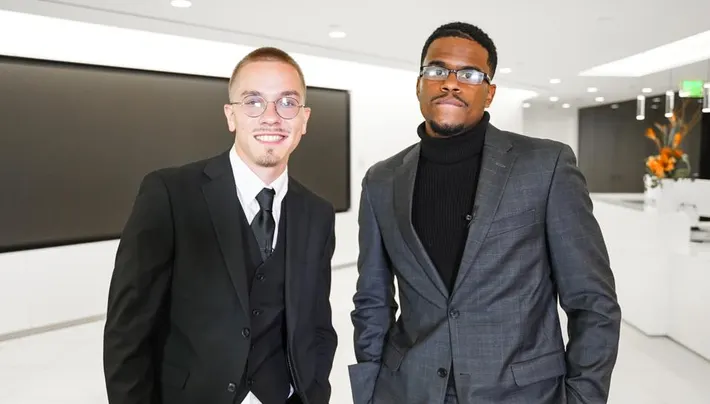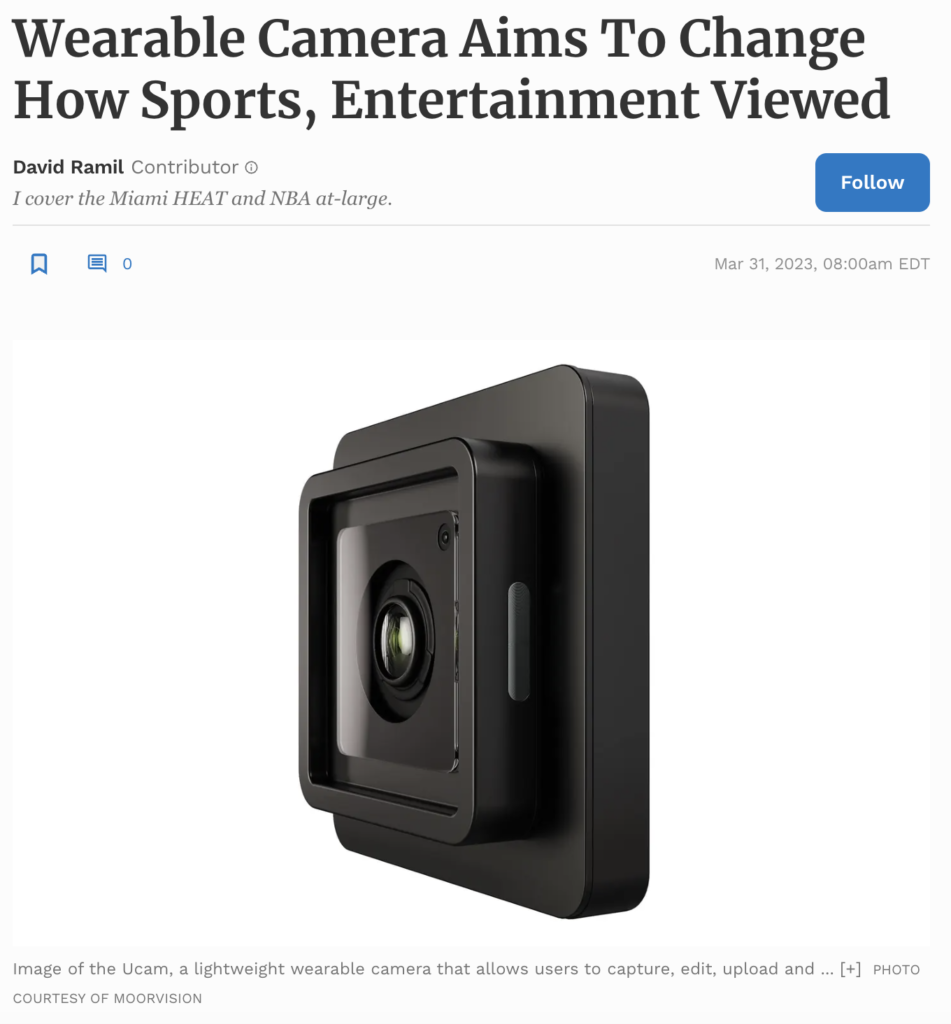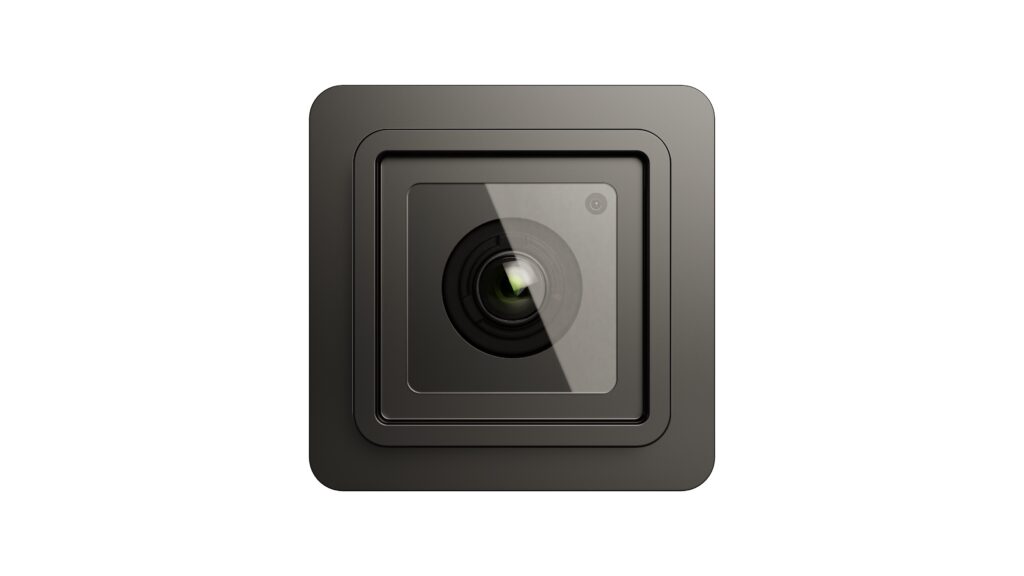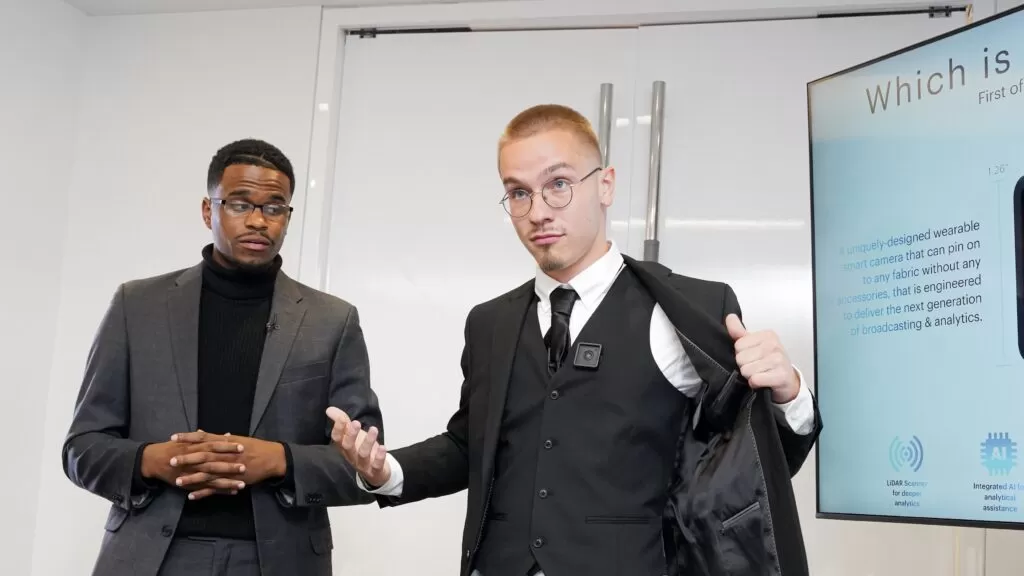Pat Mahomes threw a game-winning touchdown in SBLVIII.
Lionel Messi scored the game-winning goal in his Inter Miami debut.
Lebron James had an iconic block on Andre Iguodala in Game 7 of the 2016 NBA Finals.
These are legendary moments in sports that most of us watched on television.
But what if you could have seen what these athletes saw when they were making these plays?
What if you had the first-person perspective of what athletes experience every time they put on a jersey?
That’s what Ali-Han Ibragimov is trying to solve.
As the founder of MOORvision Technologies, he’s building next-level software and hardware that aims to disrupt fan experiences.
In this interview, we discuss his flagship product called UCam, what he’s learned from building this company, and his predictions for how fan engagement will change over the next 5 years.
Hello, who are you and what is the name of your company?
My name is Ali-Han Ibragimov, I’m the co-founder and CEO of MOORvision Technologies, a sports & entertainment technology startup focused on developing disruptive software and hardware products.
The flagship product we’re developing right now is called Ucam.
It’s a wearable camera that was initially designed for athletes to wear during games and showcase their POV.
The video below should give you a good idea of how it’s designed:
Once we realized that if the camera we’re building is small and comfortable enough for an athlete to wear in-action, it can easily translate into other verticals without any need for design change.
One of my favorite examples is nursing homes.
If you’ve ever watched Happy Gilmore, and remember Ben Stiller’s nurse character, you can imagine how easily Ucam could fit in that space.
Our first tech venture was a software startup called Digital Box Office. The DBO’s purpose is to be the middle ground for independent filmmakers who want to monetize their work instead of letting it collect dust in their hard drives.
Before that we mostly did film production, hence, why we created DBO, so transitioning into building a camera felt like an exciting challenge, yet one that made total sense.
How did you come up with the idea and what was the process of getting the company off the ground?
We were researching and preparing for a completely different camera concept for about 8 months at that point – and then one day, it was the 5th anniversary of Game 7 of the 2016 NBA Finals.
As you know, that’s the game where LeBron blocked Iguodala right before Kyrie’s shot, and they secured the game and trophy. That clip of the block is everywhere when the anniversary comes around.
As I was watching the highlight, grasping at how crazy & legendary that moment was, the first thought that popped into my head was, “Man, imagine how it must’ve felt to be LeBron at that moment!”
That’s when I started wondering, how close can we, as fans, get to experience what athletes experience during games.
This quickly led me to think – “Why don’t we put a camera on a jersey?”
I called my partner Rah, and we started doing research.
First, we had to understand why something this genius wasn’t already a thing. After some research, we realized that the biggest obstacle to comfortable POV capture was the need for accessories with all the existing action cameras in the market.
So the solution we came up with was the first-of-its-kind two-part wearable design you can wear completely accessory-free. The extra security it provides is part of its unique design.
Ucam has 4 pins that connect and keep the device together.
Once we defined a clear direction for Ucam’s design and functionality, our next step was applying for patents.
After that, we started reaching out to people to get some angel funding and develop the prototype.
We wanted to try to reach out to some of our favorite players – and as early as it was, the first one that got on a call was Metta World Peace.
Not too long after, we came to terms and he joined the team. That was huge for us!
After getting Metta, we started trying to get Ucam in front of different WNBA players, and the first one who invested in us was Renee Montgomery.
Then we got Greg Kristof, CDO of 3STEP Sports, and his business partner Breanna Kirk-Powers to believe in us, and they have been invaluable to us with their presence and advisory. And the team just kept growing from there!
Speaking to and picking the brains of our investors & advisors, other pros and former pros, and other business owners in spaces where we saw the product fitting helped shape the product into a much better version of what it initially was.

How is the company doing today and where do you see the company going in the next 5 years?
We’re currently ramping up and getting ready to launch around summer time, we’re in the middle of our seed round after successfully closing our pre-seed last year.
Most of my days are meetings with the team, potential investors, potential partners, and customers.
I also make sure to have enough time to build on every aspect of our GTM strategy, and whenever it makes sense to get feedback from certain partners.
The main priorities right now are to polish up the product as much as we can before launch and prepare for the summer activations in cities like LA, NY, Vegas, and a few more.
Another priority is to get as many league and business partnerships as possible.
Once we see how the market responds to Ucam 1.0, we plan on rolling out a few different accessories and upgrades to the product over the next few years, and we also want to build an entire product line, with Ucam at its foundation.
Our app has a lot of cool features planned to be rolled out over the next year or so.
Through starting the business have you learned anything particularly helpful or advantageous?
Honestly, a lot of things.
Most of my days are dedicated to work, so quite a lot of the life lessons that I’ve learned have come from work as well.
My very first investor meeting ever, well over ten years ago, I walked out of the meeting under the impression that the guy was all in.
Then for about 2 months, we were talking, and he was doing his due diligence, just for me to have to start chasing him around and him telling me he’s gonna pass.
On our last phone call, I was like, “Sir, how can you just say no? We’ve been talking for months and I thought you were in? I didn’t talk to any other investors because of that.”
His response was simple: “Well, I never told you not to speak to other investors. This is business, you’re always supposed to have options.”
I’ve carried that lesson with me ever since, and it’s probably one of the most important ones.
Another thing is, that there were a couple of times when we managed to get a pitch meeting with top-of-the-wishlist people, and we were excited to close the deal. But their counteroffers would have put our business in an awkward position from the cap table point of view.
And as much as we wanted those people on board, we had to turn those people down. It hurts, but I think it’s important to have enough foresight and business discipline and not let your decisions become motivated by personal motives.
To build on the last point, another fundamental tenet for me has been to have the necessary patience and empathy towards new connections that you want to prospectively do business with.
I can’t tell you how many times I’d get on a call with somebody and they haven’t gone through any supporting materials I’ve sent over. Or I would pitch everything and go through every detail, and I would just see them on their phone, or just not paying attention.
It’s very frustrating and your initial reaction might be you want to get angry, but I think sometimes it’s important to be patient and just let it go. First, if someone acts like that during a meeting with me, they clearly don’t understand or see enough value in what’s being discussed, so we’re just not meant to do business.
Second, reputation travels fast, and in most niches of the startup world a lot of people usually know each other to some degree, and you don’t want to earn the reputation of an impulsive businessman or businesswoman.
The same goes for having empathy, I know sometimes people might not get back to you in time or at all.
I think it’s important to remember that whoever you’re talking to or trying to do business with doesn’t only have your business or business offer to focus on.
Everybody has a life and quite often you’ll find that their life is much crazier than you could’ve imagined. So empathy is crucial.

What advice do you have for founders in the sports industry looking to raise capital?
I would say, have as much to show as you can before getting meetings. Fundraising got gradually less hard (not easier!) as we had more and more to show – MVP, partners, traction, etc…
Pretty much all of the funding that we’ve raised thus far has come from angel investors and former or current pro athletes.
To be honest, the VC route hasn’t been attractive nor effective for us, primarily because we’re a hardware startup, and we’re not building something that’s a part of one of the current trends.
VCs not too long ago were into anything crypto, and today it’s all AI.
For the most part, we haven’t too many transparent interactions – a lot of VCs we spoke to paint themselves as “Industry & stage agnostic”, and then on a call it’s a lot of “We love this!” and “We see a lot of upside!” but then we’ll get an email saying something along the lines of “Nice chatting with you! But!.. You’re too hardware and too early.”
My advice would be – don’t raise more than you need.
Especially if the goal that you have with your startup isn’t just to grow it and sell it. If you love what you’re building, the goal, in my opinion, should be to get it as far as you can without ripping the ownership.
Another thing, and I know this could be a tough one for founders struggling to raise capital consistently – don’t take money from just anyone willing to invest it, especially if it’s a large amount.
The higher the investment, the more equity will the investor receive in return, which also most likely means they’ll have a large influence over your direction.
Their vision for your company must be aligned with yours, otherwise there’s trouble brewing.
If you’ve gotten far enough to have those kinds of meaningful conversations, don’t forget what got you there in the first place. Stand on your vision, but don’t be too stubborn not to listen to good advice either.
What are some predictions you have for fan engagement over the next year?
I believe that what we’re building with Ucam and fans being able to see athletes, coaches, and ref’s POVs during games will quickly catch on.
I’m also seeing more pro athletes investing and getting involved with startups that bring athletes closer to their fans, which I think is nice.
The VR stuff that the is NBA trying has some potential if it keeps being polished up.
I would like to see more technologies that focus on improving athlete durability & availability, especially in the NBA.
I hear so many stories about someone buying a ticket way ahead of time to a game to watch their favorite player on a special occasion or when the team is just visiting town, just for that player to be listed as OUT on game day.

Are there any particular tools, software, or resources you use to be more productive?
Outside of the obvious fundamentals like Google Workspace, our team uses Calendly to simplify meeting scheduling.
We also use Asana and Slack.
I personally use this app called Fantastical – one of the rare apps that I found that merges your calendar with your reminders/tasks to do.
For our business emails, our team uses the Spark email app on iPhones & Macs, it’s a very sophisticated software and it has allowed scheduling emails before the Apple Mail app did, it’s got templates, which is useful when you gotta respond to dozens of emails in a short period.
Another tool that is an absolute treasure is Otter AI – the premium subscription allows you to sync your calendar with their AI so it can auto-join your meetings, transcribe them, and put together a summary & action points of each meeting.
Are you currently hiring and if so, where can people apply and find out more?
Always happy to connect and look at a resume – anyone interested in working with MOORvision can reach me at: ali@moorvision.com
Here is a link to our fundraiser if interested as well: https://www.indiegogo.com/projects/ucam-accessory-free-wearable-pov-camera#/

